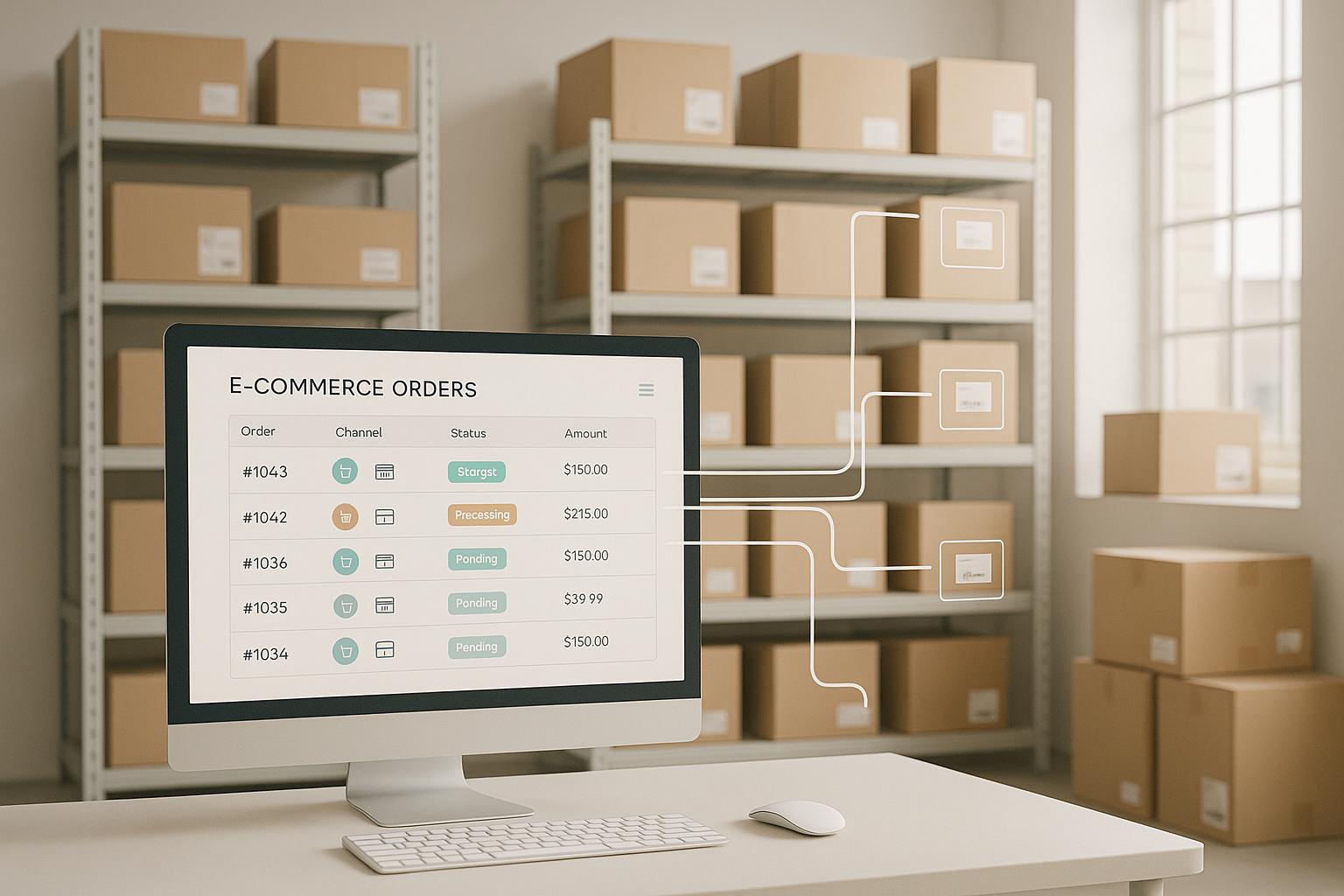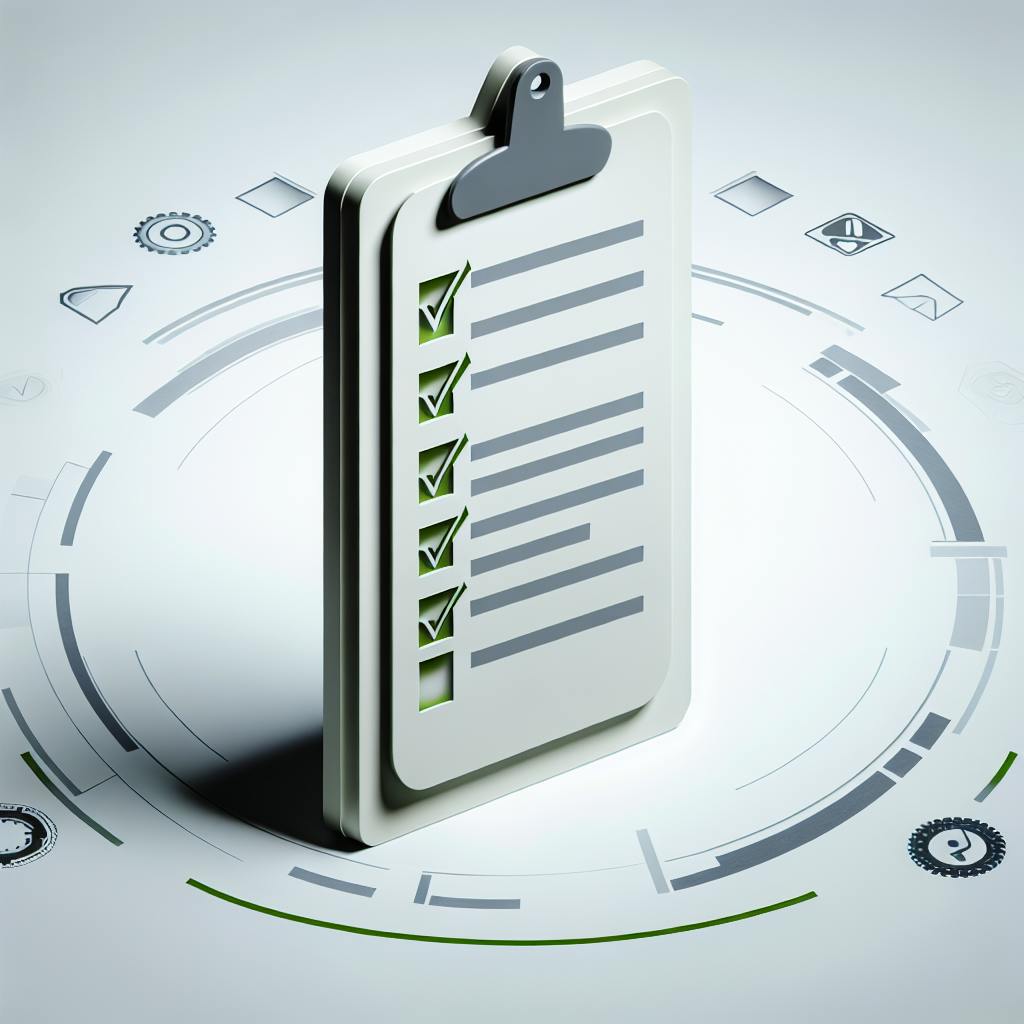Small businesses face growing threats to their sensitive data, from cyberattacks to insider risks. Many rely on cloud tools like Google Workspace and Microsoft 365, but these platforms come with unique security challenges, such as accidental data exposure and phishing attacks. Cloud Data Loss Prevention (DLP) tools can help protect sensitive information, reduce risks, and ensure compliance with regulations like GDPR and HIPAA.
Key Takeaways:
- Data Risks: Small businesses are prime targets for breaches due to weaker defenses and insider threats.
- Cloud Challenges: Misconfigurations, unauthorized access, and phishing attacks are common in cloud environments.
- Cloud DLP Solutions: Automatically detect sensitive data, enforce security policies, and simplify compliance.
- Features to Look For: Automated data discovery, access controls, and integration with platforms like Microsoft 365.
By mapping your data flows, choosing the right Cloud DLP tool, and training your employees, you can safeguard your business without overwhelming your resources.
Is Data Loss Prevention Suitable For Small Businesses? - TheEmailToolbox.com
Main Data Security Threats in the Cloud
Shifting business operations to the cloud brings a host of benefits, but it also introduces a maze of security challenges. While cloud platforms offer convenience and cost efficiency, they also open doors to vulnerabilities that traditional security systems aren’t equipped to handle. To safeguard your business data, it’s crucial to understand these risks. Let’s dive into some of the most pressing threats, starting with accidental data exposure.
Accidental Data Exposure
One of the most common - and preventable - security risks in the cloud comes from incorrect configurations. Unlike on-premise systems where data remains under physical control, cloud environments demand careful setup to ensure privacy and security. Even a single oversight, like failing to check a privacy setting or leaving a public link open, can expose sensitive information to anyone with internet access.
For example, public link sharing, while great for collaboration, can quickly become a liability. Many cloud platforms make it easy to generate shareable links, but when employees distribute these links too broadly or fail to set expiration dates, sensitive files can end up in unintended hands. A link meant for a client could accidentally be forwarded to competitors, shared on social media, or even indexed by search engines.
Database misconfigurations pose an even greater risk. When cloud databases aren’t set up correctly, they can be accessed by anyone who knows where to look. This can result in unauthorized parties gaining access to customer records, financial data, or proprietary business information. Beyond the immediate loss of data, companies often face regulatory penalties, legal issues, and long-term damage to their reputation.
Insider Threats and Unauthorized Access
Managing employee access in the cloud can be tricky. Small businesses often wrestle with finding the right balance - granting employees enough access to perform their jobs without exposing sensitive data unnecessarily.
The problem becomes more complicated with remote work and personal device usage. Without proper controls, an employee who leaves the company might still have access to critical data. Similarly, employees may unintentionally share login credentials with family members or use the same passwords across multiple platforms, creating vulnerabilities that are hard to detect.
Freelancers and contractors add another layer of complexity. They need temporary, restricted access with clear guidelines for handling sensitive data. Without these controls, contractors might retain access to confidential information long after their projects end, or worse, share it inappropriately.
Another concern is privilege escalation. Employees might start with limited access but gradually gain additional permissions as they take on more responsibilities or assist colleagues. Over time, this can lead to individuals having access to far more data than their role requires, increasing the risk of accidental or malicious data exposure. And while insider risks loom large, external threats can be just as devastating.
External Cyberattacks
External cyberattacks are a constant threat to cloud security, and phishing attacks have become a favorite tool for targeting cloud-based operations. Attackers create fake login pages that mimic platforms like Microsoft 365, Google Workspace, or Salesforce. When employees unknowingly enter their credentials, cybercriminals gain direct access to the company’s cloud environment.
These phishing campaigns often begin with convincing emails that appear to come from trusted sources, such as IT support teams, cloud service providers, or business partners. The emails create a sense of urgency, warning employees to act quickly to avoid account suspension or security breaches. Once attackers have valid credentials, they can operate undetected, making their presence incredibly difficult to uncover.
Ransomware attacks have also evolved, now targeting cloud storage and backup systems directly. Modern ransomware doesn’t just encrypt files on individual devices - it spreads to cloud platforms and synchronized folders. Even businesses with solid backup strategies can find recovery nearly impossible if their backups are also compromised. The financial toll goes far beyond ransom payments, as companies face extended downtime, lost revenue, and strained customer relationships while rebuilding their cloud infrastructure.
Lastly, account takeover attacks are particularly dangerous. In these scenarios, cybercriminals gain full control of legitimate user accounts. Once inside, they can alter security settings, create new accounts, export sensitive data, or delete files to cover their tracks. These breaches often go unnoticed for weeks or even months, giving attackers ample time to exploit the cloud environment and steal valuable information.
How Cloud DLP Services Help Small Businesses
Cloud Data Loss Prevention (DLP) services provide small businesses with a practical way to safeguard sensitive information while easing the strain on limited IT resources. These services automate critical processes, eliminating the need for tedious manual oversight. This allows teams to redirect their focus toward more strategic tasks, such as growing their business or improving customer experience.
Core Features of Cloud DLP
One of the standout features of Cloud DLP is its ability to automatically scan and categorize sensitive data stored in cloud environments. This not only reduces the manual workload for IT teams but also ensures that critical data is identified and protected promptly. By leveraging automation, small businesses can maintain better control over their data without requiring a dedicated, full-scale IT department.
Meeting Regulatory Compliance Requirements
Cloud DLP services also help small businesses tackle the often-daunting task of regulatory compliance. By identifying and securing sensitive information - such as customer data, payment details, or employee records - these tools help businesses meet the standards set by regulations like GDPR, HIPAA, or PCI DSS. This minimizes the risk of non-compliance penalties and protects the business's reputation.
Improving Efficiency and Reducing IT Workload
Automating data discovery and classification not only enhances security but also streamlines daily operations. Cloud DLP takes over repetitive IT tasks, giving small businesses the breathing room they need to focus on their goals without compromising on security. With fewer manual processes to manage, businesses can operate more efficiently and allocate resources more effectively.
Important Features to Look for in Cloud DLP Solutions
When selecting a Cloud DLP solution for your small business, the right features can mean the difference between a secure, well-managed system and an ineffective investment. A well-rounded solution not only protects your sensitive data but also integrates smoothly into your operations without adding unnecessary complexity.
Here are the key features that make a Cloud DLP solution effective and manageable.
Automated Data Discovery and Classification
At the heart of any effective Cloud DLP system lies automated data discovery and classification. This feature ensures your system continuously scans cloud environments to locate sensitive information like Social Security numbers, credit card details, or customer records. Once identified, the classification function automatically tags this data based on predefined categories. For example, if someone uploads a spreadsheet containing payment details, the system should immediately recognize and classify it as financial data requiring specific safeguards.
Modern solutions often incorporate machine learning, which refines detection accuracy over time. This minimizes false positives - an essential benefit for small IT teams that can't afford to spend hours sifting through unnecessary alerts.
Detailed Access Controls
Effective access control starts with role-based permissions, giving you precise control over who can view, edit, or share specific data. Instead of broad access levels, look for a solution that allows you to tailor permissions to fit your business structure. For instance, your accounting team might need full access to financial records, while customer service staff only require read-only access to contact details.
Additionally, real-time monitoring plays a critical role by detecting unusual access patterns. Features like conditional access rules add another layer of security. For example, the system could prompt for additional authentication if an employee attempts to access sensitive data from an unfamiliar device or location. These adaptive measures help protect your data without creating unnecessary hurdles for legitimate users.
Easy Integration with Cloud Platforms
A good Cloud DLP solution should integrate effortlessly with widely used platforms like Microsoft 365, Google Workspace, and Salesforce, ensuring it monitors data flows without disrupting everyday operations.
API compatibility is another must-have, enabling your DLP solution to work seamlessly with existing security tools and other business applications. This prevents the security gaps that often arise when systems fail to communicate effectively. For small businesses with limited resources, solutions offering pre-built connectors for popular platforms are particularly valuable. These eliminate the need for costly custom development, allowing you to secure critical applications quickly - sometimes within just a few days.
To simplify management, look for a single-pane-of-glass dashboard. This feature consolidates monitoring and control across all integrated platforms, giving you a unified view of your cloud environment's security. With this centralized approach, you can easily spot trends, investigate potential incidents, and enforce consistent policies across your business.
sbb-itb-d1a6c90
How Small Businesses Can Implement Cloud DLP
Implementing Cloud DLP (Data Loss Prevention) effectively requires a well-thought-out strategy that balances security priorities with operational needs. For small businesses, this can be particularly challenging due to limited budgets and IT resources. However, with a clear plan, you can protect sensitive data without overextending your resources.
Map Your Data Flows
Before diving into Cloud DLP solutions, start by understanding where your sensitive data is stored and how it moves within your organization. This step is critical for identifying vulnerabilities and prioritizing areas that need immediate attention.
Take the time to catalog all your cloud applications - such as email platforms or CRM systems - and document who has access to sensitive data and under what conditions. For example, track whether customer payment information is being transferred between systems and note how internal and external parties share this data.
During this process, you might uncover risky practices, like employees using personal cloud storage or unsecured email attachments for sensitive files. Reviewing file access logs and cloud storage activity can help you establish a baseline for security and highlight high-risk areas. With a clear understanding of your data flows, you'll be better equipped to choose a Cloud DLP solution that fits your needs.
Choose the Right Cloud DLP Solution
Selecting the right Cloud DLP solution is key to addressing your data security challenges. Look for a scalable option that aligns with your business size, industry compliance requirements, and budget.
Cloud DLP providers often use tiered pricing based on factors like the number of users or data volume. Be sure to calculate the total cost of ownership, including setup, training, and ongoing maintenance, over several years. This will give you a clearer picture of the long-term investment.
Ensure the solution supports the compliance standards specific to your industry, such as PCI DSS for payment data, HIPAA for healthcare, or GDPR if you handle data from European customers. Additionally, confirm that the DLP system integrates smoothly with your existing cloud platforms to avoid disruptions.
For help evaluating options, platforms like BizBot (https://bizbot.com) offer curated directories of business tools, including security solutions. These resources can simplify the decision-making process by providing tailored recommendations for growing businesses.
Train Employees and Monitor Performance
Even the best Cloud DLP system is only as effective as the people using it. Proper employee training and ongoing monitoring are essential for successful implementation.
Develop training programs that teach employees how to handle sensitive data, share files securely, and respond to DLP alerts. Tailor the content to fit the needs of different teams - your sales team may need different guidance than your accounting department. Regularly update training sessions to keep up with evolving threats and changes in your security policies.
Monitoring system alerts is equally important. Use the insights to adjust your policies and reduce violations over time. Establish measurable goals, such as decreasing the number of security breaches or improving compliance rates among employees.
Finally, prepare your team for potential incidents by defining and testing response procedures. Employees should know exactly how to react when a violation is detected, including whom to contact and what documentation to gather. Regular incident response drills can ensure everyone is ready to act effectively when it matters most.
Conclusion: Protecting Small Business Data with Cloud DLP
Data security is no longer just a concern for large corporations - small businesses are increasingly targeted by cyber threats and face growing regulatory pressures. Fortunately, Cloud DLP solutions provide an effective way to safeguard sensitive information without breaking the bank or overcomplicating operations.
The key to protecting your data lies in aligning your security measures with your business's unique needs. Start by assessing your risks and implementing technology and processes tailored to address them. Cloud DLP tools simplify this by offering automated monitoring, threat detection, and compliance support, reducing the demand for extensive IT resources. By identifying sensitive data, controlling access, and preventing unauthorized sharing, these solutions create strong, multi-layered defenses for your most critical information.
However, technology alone isn’t enough. Effective data protection requires ongoing effort - regular monitoring, employee training, and policy updates are vital to staying ahead of evolving threats. Investing in these areas now can save your business thousands of dollars in potential breach costs and help preserve your reputation.
For small businesses ready to enhance their data security, BizBot offers a curated directory of security tools designed to meet a variety of needs. Visit BizBot to explore options that align with your budget and compliance requirements.
To get started, map out your data flows, pinpoint your highest-risk areas, and choose a Cloud DLP solution that fits your business. With the right strategy, you can create a strong foundation of data protection that evolves alongside your company.
FAQs
How can small businesses ensure their Cloud DLP solution meets industry compliance standards like GDPR or HIPAA?
To keep your Cloud DLP solution aligned with regulations like GDPR and HIPAA, start with essential practices such as encryption, strict access controls, and real-time monitoring. For HIPAA, prioritize protecting Protected Health Information (PHI) by implementing measures like encryption, maintaining detailed audit logs, and enforcing secure access policies. On the other hand, GDPR compliance emphasizes minimizing data collection, obtaining explicit consent, and employing robust data protection strategies, including breach detection.
It’s also important to select cloud providers that hold certifications relevant to your industry. Regular compliance audits are key, as is tailoring your DLP policies to directly address the specific requirements of the regulations you’re subject to. These steps are crucial for safeguarding sensitive data while ensuring your business meets regulatory standards.
How can small businesses map their data flows to prepare for a Cloud DLP solution?
To get ready for a Cloud DLP solution, small businesses should start by identifying everyone and everything that interacts with sensitive data - this includes employees, internal systems, and third-party vendors. Once that's done, track the journey of your data: where it starts, how it moves through your networks and systems, and where it ultimately ends up. A visual map of these data flows can make this process clearer, helping you spot weak points or areas that might need extra attention.
It's also important to document these data flows and keep logs updated. This allows you to focus on the most critical areas that need protection, making your DLP strategy more effective. With a solid understanding of your data's movement, you'll be in a stronger position to reduce risks and protect sensitive information.
How can automated data discovery and classification in Cloud DLP solutions simplify data protection for small business IT teams?
Automated Data Discovery and Classification in Cloud DLP
Cloud DLP solutions make protecting sensitive information easier by automating the process of identifying and categorizing data. Instead of relying on time-intensive manual efforts, these tools scan your systems to locate sensitive details - like customer data or financial records - and classify them according to their sensitivity levels.
This approach boosts data security while also helping smaller IT teams maintain compliance with regulations. Plus, it eliminates the need for frequent manual audits. By simplifying these tasks, small businesses can dedicate more time and resources to growing their operations, knowing their data is safeguarded.


